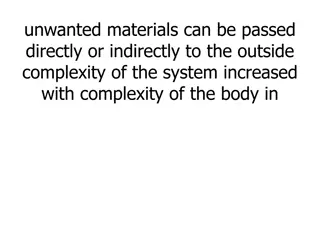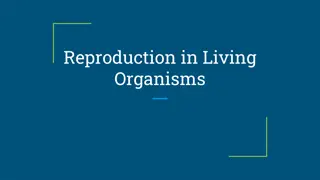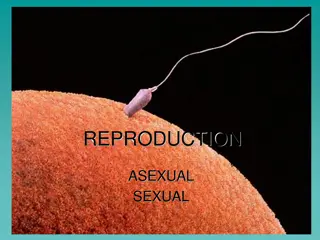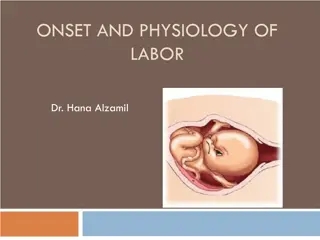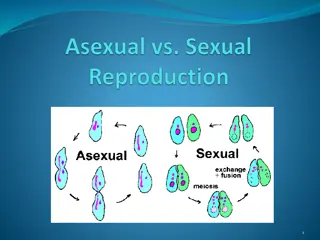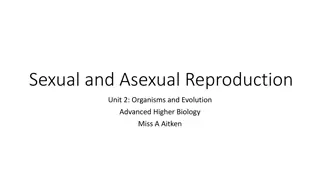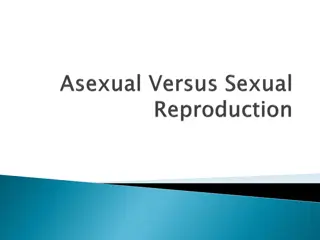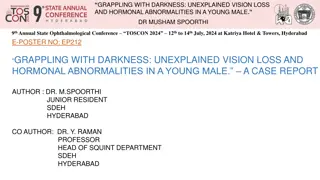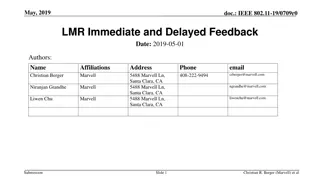Hormonal Control of Reproduction: Feedback Mechanisms and Changes
Intricate hormonal feedback mechanisms regulating reproduction in males and females, including variations during different phases like ovulation and menopause. Understand the roles of key hormones and their impact on FSH, LH, GnRH, and estrogen levels.
Download Presentation

Please find below an Image/Link to download the presentation.
The content on the website is provided AS IS for your information and personal use only. It may not be sold, licensed, or shared on other websites without obtaining consent from the author.If you encounter any issues during the download, it is possible that the publisher has removed the file from their server.
You are allowed to download the files provided on this website for personal or commercial use, subject to the condition that they are used lawfully. All files are the property of their respective owners.
The content on the website is provided AS IS for your information and personal use only. It may not be sold, licensed, or shared on other websites without obtaining consent from the author.
E N D
Presentation Transcript
Ministry of higher Education and Scientific Research UNIVERSITY OF BASRAH AL-ZAHRAA MEDICAL COLLEGE REPRODUVTIVE SYSTEM MODULE SESSION :2, Small group DURATION: 2hr Hormonal Control of Reproduction Module staff: Dr Hadeel S. Al Ali Dr Raya Muslim Alhassan (module leader) Dr Nada Hashim Aljassim Dr Nawal Mustafa Abdulah Dr Nehaya Mnahi Al-Aubody Dr Nesreen Muhsin Jar alla Guyton, A.C., Human Physiology and Mechanisms of Disease, 13th Edition, W.B. Saunders, 2016, ISBN: 978-1-4557-7005-2. For more discussion, questions or cases need help please post to the session group
2.1 Complete these flow charts showing hormonal feedback control mechanisms. Add the names of the hormones released and the feedback control mechanisms to the anterior pituitary and hypothalamus. In the male:
2.2 In the female the picture is complex as hormone levels, function and control vary according to the phase of the menstrual cycle. Complete this flow chart as for early and middle follicular phase; i.e., before ovulation has occurred.
2.3 Complete this flow chart, again for the female, but now as is occurring at ovulation showing positive feedback.
2.4 Hence, discriminate between the roles of oestrogen in the early follicular phase and its role at ovulation.
2.5 At the menopause the ovary secretes dramatically less oestrogen. What will happen initially to: Plasma levels of FSH Plasma levels of LH The secretion of hypothalamus? GnRH from the
2.6 Why are the changes in LH and FSH secretion at the menopause different?
2.7 In pregnancy, once the placenta has developed it begins to secrete oestrogen and progesterone. The secretion is independent of LH and FSH. What will happen to: Plasma levels of FSH Plasma levels of LH Hypothalamic secretion of GnRH in a pregnant woman?
2.8 The drug clomiphene is an "anti-oestrogen" used in the treatment of infertility. Clomiphene exerts a weak oestrogenic effect, sufficient to achieve uptake and binding by to oestrogen receptors. It then reduces the concentration of oestrogen receptors inhibition of the process of receptor replenishment. hypothalamic-pituitary axis blinded to the endogenous oestrogen level in the circulation. It is given for 5 days at the start of the menstrual cycle. What will be the effects on: GnRH secretion Plasma levels of FSH and LH of treatment with clomiphene? Thus, the
2.9 What would be the effects on gonadotrophin secretion of a constant moderate dose of a progesterone like drug?
2.10 How might these effects be different if the dose is much lower? In this case which parts of the reproductive system might still be affected?
2.11 If the anterior pituitary gland is transplanted to another site in the body the secretion of LH, FSH, TSH, GH and ACTH falls to negligible levels. Why?
2.12 The transplanted anterior pituitary, however, hypersecretes prolactin. Why?
2.13 The major hypothalamic hormone inhibiting prolactin secretion (prolactininhibitory hormone). The actions of dopamine are mimicked bromocriptineand antagonised by drugs like haloperidol, metoclopramide and domperidone. What will happen to prolactin levels if a woman is given bromocriptine? is dopamine by the drug
2.14. hyperprolactinaemia, disturbing the pulsatile release of GnRH. What do you think might happen to the fertility of a woman given metoclopramide? Prolactin and, particularly, fertility suppresses by
2.15 In some women, impaired fertility is associated with a loss of the normal daytime fall in prolactin levels. Which of the drugs mentioned above would you choose to lower prolactin levels and restore fertility?
Thank you Thank you







